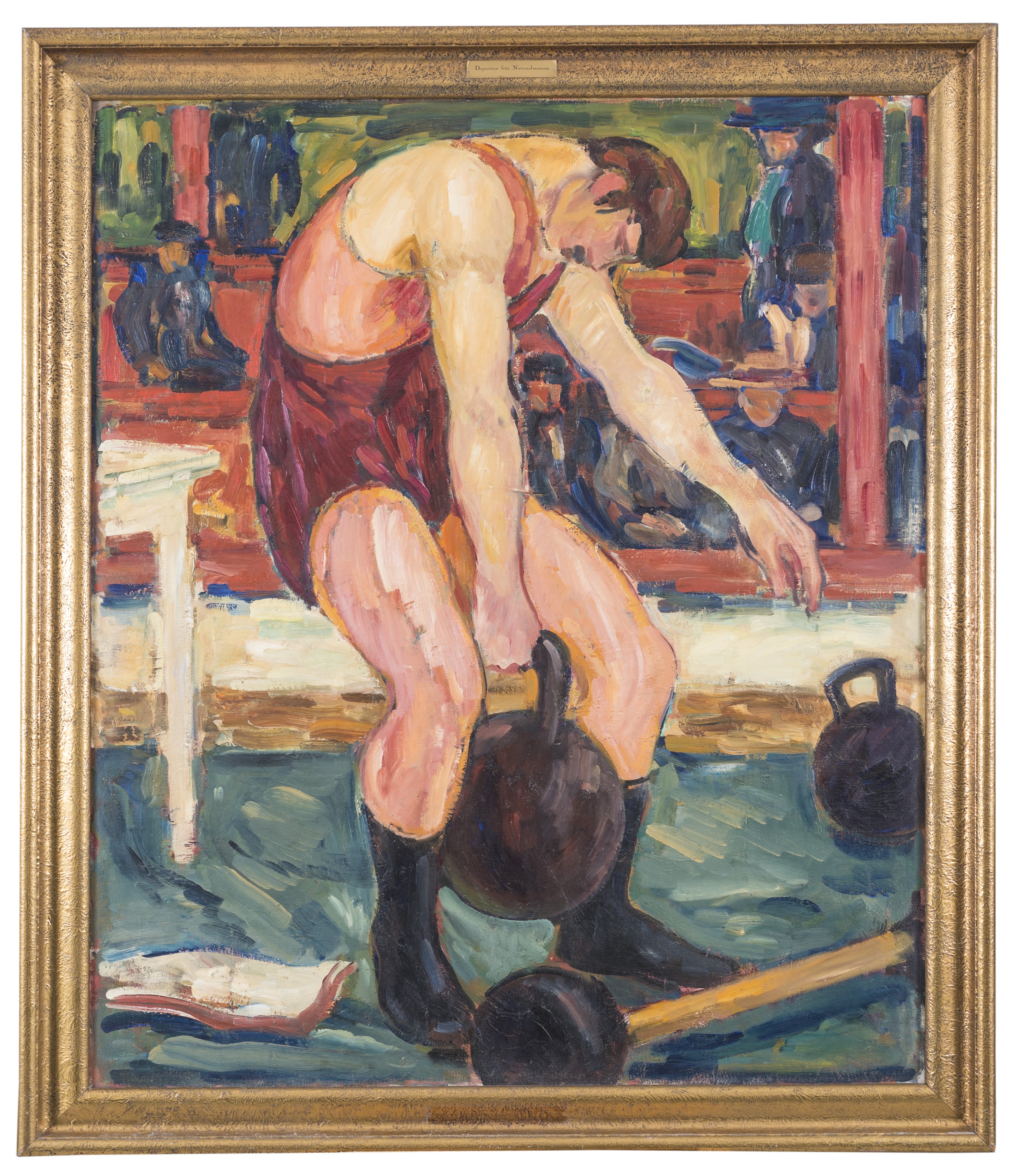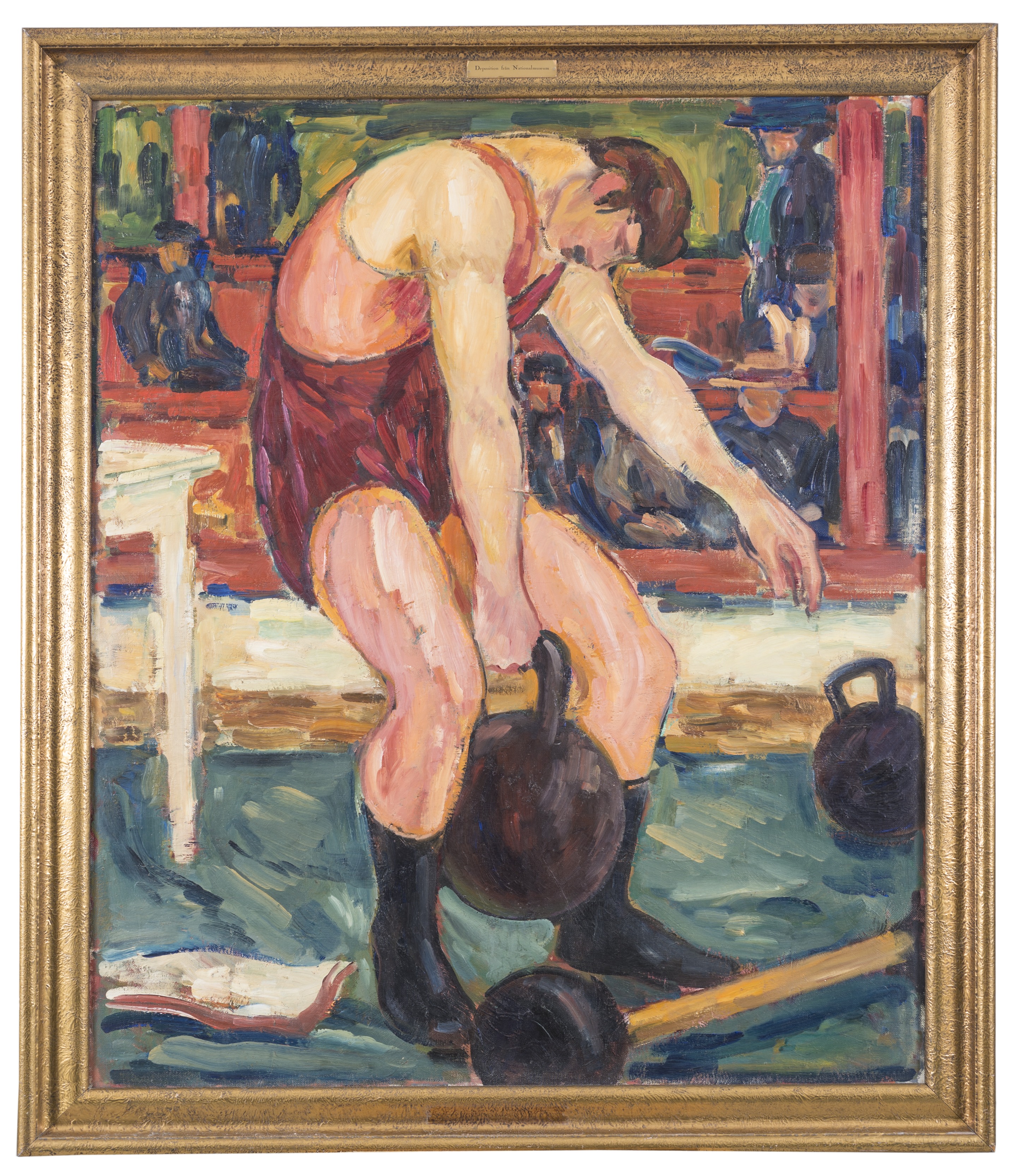Karl Gustaf "Gösta" Albert von Hennigs (1866–1941) was a Swedish painter and university professor. In 1890 he started to work in an architecture firm. In 1891 he enrolled in the painting school of the artists' association, where he was a student of Anders Zorn. His early artworks were influenced by Zorn, but also Richard Bergh and Per Hasselberg and consisted mainly of street scenes. Later, his interests moved towards themes related to entertainment. He painted cabaret scenes, circus arenas, race courses, clowns, and dancers. In his art, we can see the influence of Japanese woodblock prints and Impressionism. Edgar Degas was his inspiration for illustrating movement.
Athletes depicts the kettlebell lifting competition. A concentrated athlete is lifting a kettlebell, surrounded by other weights and observed by the public in the background. Initially, kettlebells (then known as girya), were used to weigh produce at the market in 18th century Russia. Some men would lift and swing them for fun and show off their strength. In the 19th century, kettlebells were used by circus strongmen at festivals and fairs in Russia and Europe. With time, kettlebell lifting became a competitive discipline and nowadays kettlebells are available at gyms across the world.
Gösta von Hennigs represented Sweden at the 1932 Summer Olympics in Los Angeles in the Olympic Art Competition. Art competitions formed part of the modern Olympic Games during its early years, from 1912 to 1948. Medals were awarded for works of art inspired by sport, divided into five categories: architecture, literature, music, painting, and sculpture.
We present today's piece thanks to Europeana, but the painting itself is from the collection of the Nationalmuseum in Stockholm.
P.S. Athletes occur in art since the ancient Greek times. See here this timeless beauty of the human's body!


 Gösta von Hennigs
Gösta von Hennigs